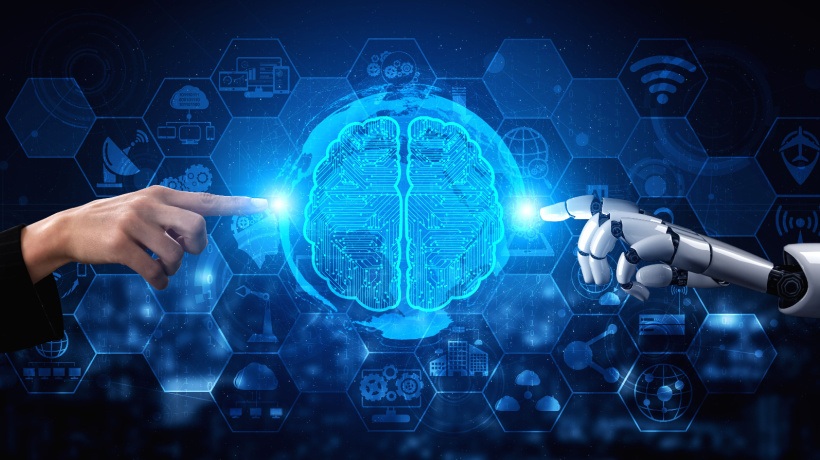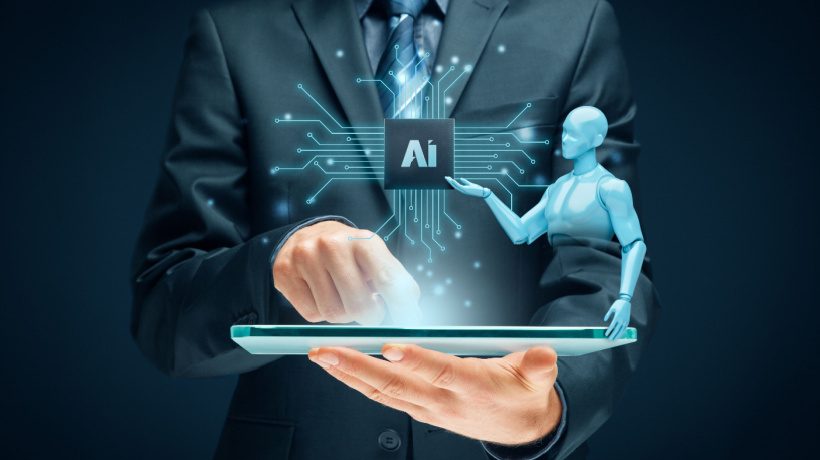AI In Learning And Development: The Impact
The use of AI in online Learning and Development is now a hot issue across all business sectors. Most business experts and observers agree that AI will influence our future. AI tries to blend human intelligence into technology to create more intelligent systems. Precisely how AI is affecting these fundamental aspects is the issue. Learn about the future of AI in online Learning and Development and how to improve it.
What Is Artificial Intelligence?
The term "Artificial Intelligence" (AI) is most often used to refer to systems that operate through Machine Learning consultancy. AI refers to systems or computers that mimic human intellect to perform tasks and may evolve and enhance themselves depending on the information they receive. Software development for Artificial Intelligence may take many different forms.
Machine Learning (ML) is a kind of Artificial Intelligence or a technique for obtaining AI, in which a computer program steadily improves at a certain task without human input. Since Machine Learning and AI are the most useful types of learning in AI for L&D professionals, we will focus on these. Machine Learning and AI may be used to augment and improve a broad range of daily activities.
AI In Online Learning And Development
Utilizing AI, businesses are already connecting with consumers and encouraging action. Organizations continue to invest in AI, which has resulted in a huge growth in the number of applications and use cases. AI can provide L&D with a considerable competitive advantage. By adjusting to the needs of modern learners, it investigates infinite new possibilities. Discover how AI can revolutionize online Learning and Development and its amazing possibilities.
1. Measure Effectiveness
If you want to continue in business and maintain the AI trend in retailing, making a profit must be your first goal. Before success, you must also understand how to operate it effectively and efficiently. The evaluation of a learning program's success has proven extremely difficult. Evaluating average learning process performance is significant and time-consuming. When using AI technologies, L&D specialists quickly collect and evaluate data to get detailed insights into the effectiveness of AI in online learning. The best learning choice tool may be developed by dissecting program performance, learner performance, and learner performance on business goals. This allows learning specialists to modify their training programs rather than crossing their fingers and hoping they did it correctly.
2. Personalize The Learning Experience
Every individual has a different method for collecting and processing information. Each employee will choose their preferred learning method to the fullest extent. This might be accomplished via video tutorials, textual information, gamification, in-person instruction, audio-guided presentations, or other methods. This explains why there are so many different learning theories and techniques.
One of the key benefits of AI-supported learning and growth is the customization of this adaptive learning. Due to AI, training plans may now be modified to suit the requirements of individual employees. AI can tailor instruction to each learner's speed, age, gender, and demographics. With AI software development for eLearning, people may arrange their unique learning materials, set their learning goals, and acquire information based on their choices.
AI solutions deliver better results when increased engagement and deeper learning are coupled. Employees achieve their learning objectives more rapidly because they get information suited to their preferences and aspirations. With enhanced learning outcomes, a company's learning investment will pay off.
3. Know The Learning Gaps
If businesses can identify the knowledge gaps in their workforce, they may find it simpler and more cost-effective to educate employees in certain areas and boost their competence. Your company will gain from this, and since your workforce is learning new things, they will continue to be engaged in their work. AI can calculate, aggregate, and analyze big data scientific sources to a certain person's knowledge gaps. The development of learner profiles using these conflicting pieces of data may enhance the entire learning process and provide an employee with new skills.
4. Offer Appropriate Content
Like Google, AI may automatically suggest the most relevant information by looking through your LMS, the internet, other sources, and your content. These AI-based learning techniques assist learners in saving time since they don't have to spend hours manually sorting through several pages of search results.
By making AI the core of the whole learning platform, L&D can provide administrators with new tools to construct more individualized, immersive learning experiences while automating time-consuming tasks. Learners may use the platform's global search to find the most relevant material without an administrator needing to categorize the data manually. Additionally, learners may invite other learners to see their published material depending on their prior work. The greatest aspect is that learning always runs smoothly since everything happens in the background.
5. Collect Important Insights
L&D aims to make sense of all the data and use the insights to create commercial value. AI can manage ongoing data collecting in Learning and Development, enabling consistently informed business choices. Automation, data insights, personalization, Machine Learning solutions, and sustainability are all improved with AI integration. Businesses may utilize the data to understand better how their AI learns and develops. They may discover important trends and patterns, possible issue areas, and the success of certain courses.
6. Automate
AI may be used to develop learning systems that track all data, programs, training materials, and schedules and deliver them depending on each student's background, preferences, and goals. These complex algorithms enable your learning platform to do some of the duties that you, as a student or administrator, would traditionally perform manually.
Your learning platform can evaluate practically all the different types of material you bring to your platform safely and securely. This is an example of how AI is used in Learning and Development. It may also determine how to simplify and enhance the learning process. Additionally, learners may invite other learners to see their published material depending on their prior work. The best aspect is that nothing ever gets in the way of learning since everything happens in the background.
7. AI-Based Digital Tutor
AI-powered digital coaches have already been successfully used to replace coaches, lecturers, speakers, and instructors. They may simulate the relationship between an expert and a beginner and their learning interactions, help students with their queries, plan ahead of time, and provide learning resources. L&D professionals are developing blended learning in AI strategies that combine conventional classroom lectures with materials using the most current advancements in digital technologies. They also use microlearning, which breaks up teachings into smaller, easier-to-create portions.
How To Develop AI Software
The development procedure can only be handled by those companies that hold the expertise in developing AI solutions. They are the only ones who can answer your questions about how to develop AI software, how much capital you will need for the development, and other things as well.
Conclusion
Due to the use of AI in learning, training, and software development services, learners will someday be able to get training materials customized to their preferences, abilities, and personal characteristics. With the correct investment in learning methods for AI, the whole L&D process may be greatly improved for the individual and the business. AI Learning and Development professionals should be aware of the rapidly developing technology and apply it to enhance learning. To develop innovative training strategies and approaches, L&D professionals should research and apply new AI advancements.









